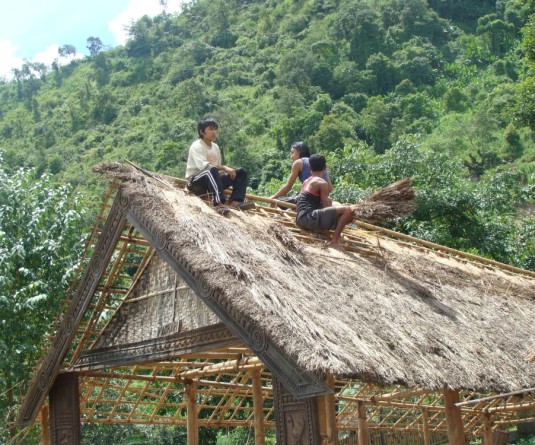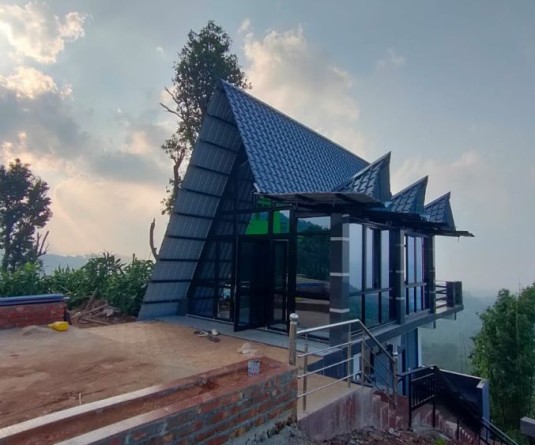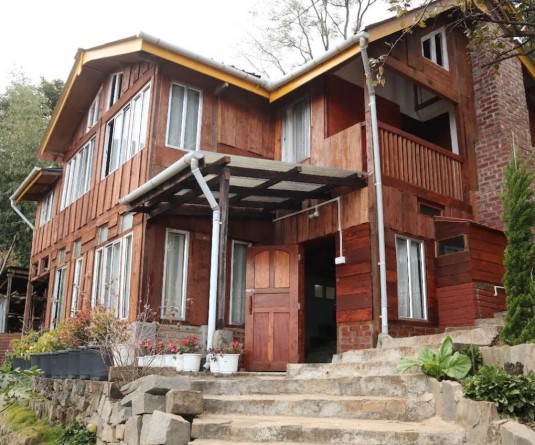Urban centers in Nagaland are not products of planning. Buildings are constructed where there is space, urban planning is poor. Kohima (seen here) today is cluttered and an earthquake or landslide could result in massive loss of life and property. (Photo by Kazu Ahmed)
As the Uttarakhand toll rises, Nagaland needs to reduce vulnerability and risk
Morung Express News
Dimapur | June 26
Uttarakhand was hit by unprecedented rainfall in June followed by devastating landslides that have left almost 1000 dead and 70,000 people stranded in debris, who are in the process of being rescued and evacuated by the army.
The Comptroller and Auditor General (CAG) of India had pointed out two months back that Uttarakhand had a dysfunctional disaster management system. The National Disaster Management Authority (NMDA) declared that most of the disaster was a result of haphazard human development. Uttarakhand was a bit of both.
“Places like Uttarakhand and Sikkim are, in fact, much better prepared in terms of disaster management than Nagaland,” informs a senior official from the Nagaland State Disaster Management Authority (NSDMA). Though set up in 2005 (through the Disaster Management Act, 2005), the NSDMA’s first meeting was held in 2011. Its employees are all contractual and the institution runs on a similar ad-hoc basis. Officials admit that people without any or little experience are inducted to run projects. Through collaboration with various agencies like the United Nations Development Programme (UNDP), the NSDMA has managed to build some capacity in Nagaland to “manage disaster”.
“We have trained the State Disaster Response Force, which is basically five companies of the IRB deployed all over the state. In urban areas, communities have been empowered as the first measure of response. Quick Response Teams have been set up in some parts of Kohima while a Community First Responder has been established each in Kohima, Phek, Peren, Tuensang and Mon districts,” says the officer. But this is post-disaster management.
In areas like Nagaland the risk of earthquakes, landslides or forest fires remain high. Earthquakes measuring 5.8 on the Richter Scale have originated in Phek, as frequently as in July 2012 and January 2013. Both times, its tremors were felt along the Indo-Myanmar border. Measures need to be instated to reduce vulnerability and risk
So is urban Nagaland prepared in the face of natural disaster? “Not really. Urban development should be sensitive. Local authority should be equipped with civil engineers and architects who understand the landscape and threats. Construction should be controlled. None of this happens. In a worst case scenario, the toll in Nagaland will be higher than in other places,” the NSDMA official admits.
A sensitive seismic zone, coupled with planning that looks like Kohima, could be recipe for disaster that is more than naturally triggered. A shake from Mother Earth, through earthquake or landslide, and the cluttered construction of Kohima town could result in major catastrophe.
“There is no grassroots awareness. People frequently encroach on drainage space while building houses, or divert the course of a river. Construction is hapless. This could lead to floods of various kinds and submerge surrounding areas in case of heavy rains,” explains Dr. H. Sothu, State Coordinator of the Disaster Management Cell, Administrative Training Institute. According to the Cell’s website, earthquakes, landslides, floods, fire, high speed winds and drought have been part of Naga history. With concentration of human habitation in parts of the state, urbanization has been unprecedented.
But not urban development. Provision for drainage comes almost last on the urban development list. Rivers like Chathe that are regularly diverted or mined for stones present the risk of running roughshod.
Nonchalance comes from the government and the people.
When explained, people often turn to the popular Naga argument, this is my house, I will do as I please. “Which is true but you will also be responsible if the house is eaten up by a river,” says Dr. Sothu. He warns of Kohima’s haphazard construction as an urban disaster in the making.
But Kohima, till date, has no building bye-laws, a pre-requisite to building blocks in any urban set up. It helps establish certain safety standard in urban development and local construction based on expertise provided by the government.
“Without building bye-laws, it is very difficult to control rampant construction,” admits Chief Executive Officer of the Kohima Municipal Council, Elizabeth Ngullie. “Now that we see what has happened in Uttarakhand, these bye-laws should be enacted immediately to regulate proper construction,” she asserts, while admitting that if a calamity were to hit Kohima, the damage would be on a “higher scale”.
Building bye-laws are generally approved by the Department of Urban Development and executed by municipal councils. Officials from Urban Development could not be contacted to affirm why these bye-laws do not exist in Nagaland.
Disasters are often a mix of errors—through lack of will, short sight or pure arrogance over nature. The NSDMA, chaired by the Chief Minister of state, say officials, needs to be taken more seriously, its programs and policies implemented. Avoiding disaster needs governance (through those in-charge of urban development and municipalities) to shape sustainable development. It also needs people to realize, reflects Dr. Sothu, that “lack of civic sense, direct disposal of waste, extensive use of plastics, rampant construction, poor material etc. contribute to a major disaster.”






